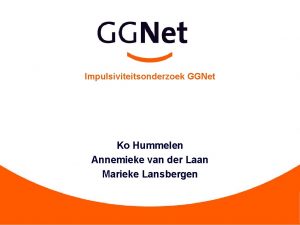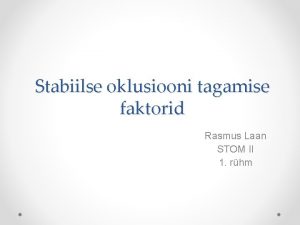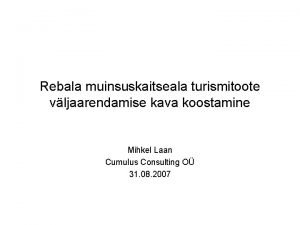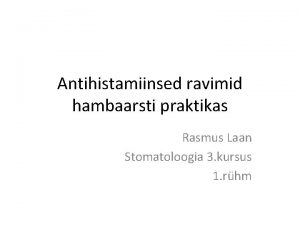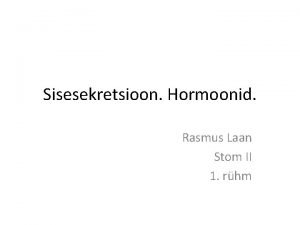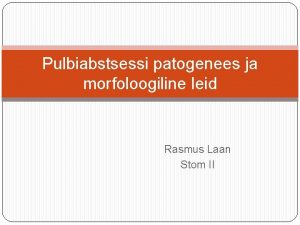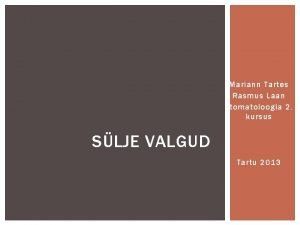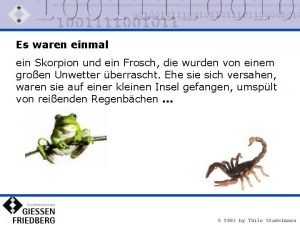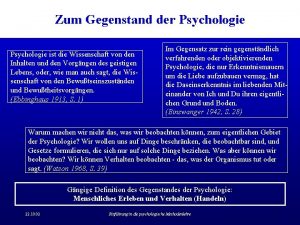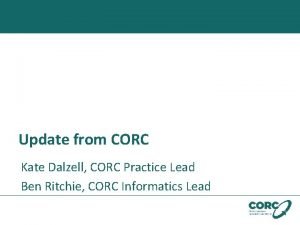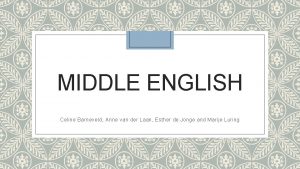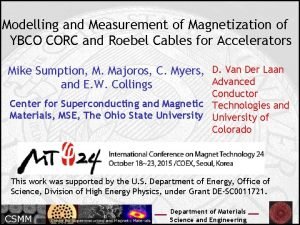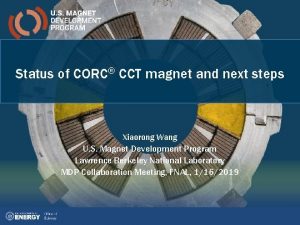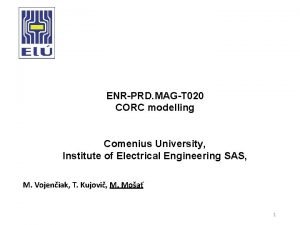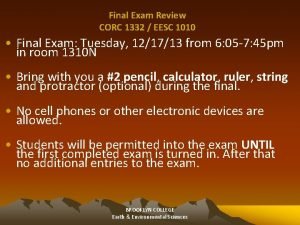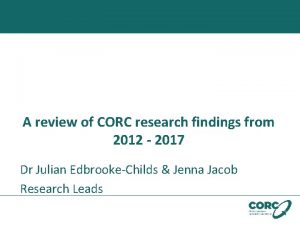CORC Results and Perspectives Danko van der Laan




















- Slides: 20

CORC®: Results and Perspectives Danko van der Laan and Jeremy Weiss Advanced Conductor Technologies & University of Colorado Boulder, Colorado, USA Work supported by U. S. Department of Energy awards numbers DE-SC 0007660, DE-SC 0009545, DE-SC 0014009, DE-SC 0015775 and DE-AC 02 -05 CH 11231 WAMHTS-4, Barcelona, Spain, February 16, 2017

Outline 1. CORC® cables current and projected performance 2. CORC® cables applied in Common Coil accelerator magnets 3. CORC® wire development for accelerator magnets 4. CORC® wires wound into solenoids and Canted-Cosine-Theta magnets 5. CORC® magnet feeder cables 2

CORC® magnet cables and wires CORC® wires (2. 5 -4. 5 mm diameter) • Wound from 2 -3 mm wide tapes with 30 mm substrate • Typically no more than 30 tapes • Highly flexible with bending down to <50 mm diameter CORC® cable (5 -8 mm diameter) • Wound from 3 -4 mm wide tapes with 30 or 50 mm substrate • Typically no more than 50 tapes • Flexible with bending down to >100 mm diameter CORC®-CICC • Performance up to 100, 000 A (4. 2 K, 20 T) • Combination of multiple CORC® cables or wires • Bending diameter about 1 meter 3 Courtesy Tim Mulder (CERN/Univ. Twente)

Current CORC® cable performance Winding CORC® cables • Accurate control of cable layout • Long cable lengths possible • Ic retention after winding 95 -100 % • 120 meters wound in 2016, of which 70 meter for commercial orders CORC® cable • 50 tapes with 30 mm substrate • 3 mm wide tape Ic (77 K) = 108 A • Lift factor Ic(4. 2 K, 20 T)/Ic(77 K, s. f. ) = 1. 72 • Bent to 100 mm diameter 4. 2 K Extrapolated Ic (4. 2 K, 20 T) = 6, 354 A Extrapolated Je (4. 2 K, 20 T) = 309 A/mm 2 4 Oct. 2015

Je in CORC® accelerator cables: current and future CORC® cable Je on track to 600 A/mm 2 at 20 T In-field CORC® cable testing @ 100 mm • Je of 309 A/mm 2 at 20 T achieved in Oct. 2015 • Large bore magnet at NHMFL (17 T) • Projected Je 450 A/mm 2 mid 2016 • Large bore magnet at CU (8. 75 T) • Projected Je 600 A/mm 2 early 2017 30 mm, 7. 5 % Zr Problems! • NHMFL magnet decommissioned • Cable Ic at 8. 75 T >> 10 k. A 38 mm, 7. 5 % Zr really old • No new tests after Oct. 2015! • New 14 T large bore magnet expected at NHMFL in 2017 5

Current CORC® cable performance (untested!) Performance of commercial tapes • Purchased 8, 300 meters from Super. Power in 2016 • Tapes with 30 and 50 mm substrates Record 2016 samples • M 4 -396: lift factor Ic(4. 2 K, 20 T)/Ic(77 K, s. f. ) = 2. 65 • Typical lift factor (20 T) = 1. 9 • Ic (77 K) = 167 A (4 mm, 50 mm) • Ic (77 K) = 82 A (2 mm, 30 mm) • Typical Ic (4 mm) 150 A, (2 mm) 68 A CORC® cable Oct. 2015 Je(20 T) • All estimates with Ic retention of 70 % • Typical Ic and lift factor: Je(20 T) = 375 A/mm 2 • Highest Ic and lift factor: Je(20 T) = 560 A/mm 2 • At 90 % Ic retention: Je(20 T) = 480 -720 A/mm 2 6 Courtesy Dima Abraimov (ASC-NHMFL) • On track to Je(20 T) > 600 A/mm 2 • Need magnet to demonstrate!

CORC® cables for Common Coil accelerator magnets CORC® cables are ready for the next step • R&D for their application into magnets • Cable bending diameter > 100 mm • Cable Je(20 T) > 400 A/mm 2 • Operating current > 10, 000 A (20 T) Common Coil magnet ideal for CORC® cables • Conductor friendly design • Performance determined by coil separation, not cable bending diameter • Allows for large bending diameters > 250 mm Proposed program to Department of Energy • Teaming with Ramesh Gupta (BNL) • 10 T LTS Common Coil outsert magnet • Phase I SBIR funding requested to develop 5 T CORC® insert magnet 7

Introduction of flexible CORC® magnet wires CORC® cable, 7 mm CORC® wires • • • Cable diameter 5 – 8 mm • Bendable to >100 mm diameter • Typically 50 tapes or less (3 mm or 4 mm wide) • Easier to reach high Je (20 T) CORC® wire, 3. 6 mm 75 mm mandrel O. D. Tapes with 30 mm substrate Wire diameter 2. 5 – 4. 5 mm Bendable to < 50 mm diameter Typically 30 tapes or less (2 mm and 3 mm) Size and flexibility requirements make it harder to reach high Je(20 T) First round, isotropic YBCO wire! 8

Thinner substrates enable CORC® wires Ic retention test • tapes with 30, 38 and 50 mm sub. • ensuring a winding angle of 45° Degradation starts at compressive strain exceeding -1. 2 % Minimum former diameter • 4 mm for 50 mm substrate • 3. 2 mm for 38 mm substrate • 2. 4 mm for 30 mm substrate 9

Strain tolerance depends on substrate quality Tapes on 30 mm substrate from two Hastelloy batches • Earlier batch of softer substrate material • Latest batch with harder substrate material Substrate hardness or overall quality likely to affect minimum former size 10

Testing of CORC® wire flexibility CORC® wire layout 12 tapes of 2 mm width (3. 3 mm O. D. ) Bending wire followed by Ic measurement Bending wire sections followed by extracted tape Ic measurements 75 mm 50 mm 35 mm diameter 11

12 -tape CORC® wire bending results Bending wire sections followed by 2 mm wide tape Ic measurements Degradation in inner layer due to surface roughness CORC® wire Ic measurements after wire bending > 93 % Ic retention even at 35 mm bending diameter 12

In-field performance of 16 -tape CORC® wire layout • 16 tapes of 2 mm width • 3 mm diameter • Expected Ic(10 T) = 2, 900 A Test layout • 5 turns at 60 mm diameter • Stycast reinforcement 60 mm OD Courtesy Tim Mulder (Univ. Twente/CERN) Results • Ic 1, 695 A (4. 2 K, 10 T, 0. 1 m. V/cm) • Ic 2, 560 A (4. 2 K, 10 T, 1 m. V/cm) • Projected Je(20 T) 145 -210 A/mm 2 80 % Ic retention after extracted tape measurements agrees with CORC® wire measurement 13

Projected Je of CORC® wires Advanced Conductor Technologies is working with Super. Power to further decrease the substrate thickness to 20 -25 mm 29 -Tape CORC® wire with Je(20 T) > 300 A/mm 2 to be tested next week Je(20 T) of a 3. 5 mm CORC® wire likely to increase from 300 A/mm 2 to 1, 000 A/mm 2 when combining lift factor of 2. 65 with 20 mm thick substrates 14

CORC® wires in high-field insert solenoid Final deliverable Phase II SBIR with ASC-NHMFL • Develop high-field insert solenoid wound from CORC® wires • Test insert magnet at 14 T background field at ASC-NHMFL • Aim for added field of at least 2 -3 T, maybe 5 T depending on tape performance CORC® wire solenoid details • CORC® wires wound from 3 mm wide tape with 30 mm substrate • 1, 500 meter tape ordered, 1/3 already delivered • CORC® wire length 20 -30 meters depending on tape performance • Potential for second insert using CORC® wires with 2 mm wide tape 14 T + 2 -3 T 70 mm 14 T + 2 -3 T CORC® wires with 3 mm wide tape 40 mm CORC® wires with 2 mm wide tape 120 mm 15

CORC® wires in Canted-Cosine-Theta magnets Teaming up with Lawrence Berkeley National Laboratory • Develop 5 T Canted-Cosine-Theta insert • Insert wound from CORC® wires • More details Xiaorong Wang talk tomorrow Several steps 1. 2 -layer insert C 1 2. 4 -layer insert C 2 3. … CCT-C 1 CCT insert C 1 • 2 -layers, 40 turns per layer • Determine feasibility and field quality • 16 -tape CORC® wire • 50 meter CORC® wire delivered Aug. 2016 CCT insert C 2 • 4 -layers, 40 turns per layer • Push for field: 2 -3 T in 10 T external field • 29 -tape CORC® wire, expected Je(20 T) 300 A/mm 2 CCT-C 2 • 100 meter CORC® wire order expected 2017 16 50 m, 16 -tape CORC® wire for CCT-C 1

C 0: CORC® wire test for CCT-C 1 Layer B Layer A CCT C 1 • Inner layer I. D. 70 mm • Minimum bending diameter 50 mm 77 K 16 -tape CORC® wire • Ic (77 K) before winding = 718 A • Ic (77 K) after winding = 662 A • Only 8 % lower after winding 4. 2 K up to 2 k. A • Feasibility of using CORC® wires in CCT magnets has been demonstrated • 4. 2 K measurement needs better power supply (end of February) 17

CORC® magnet feeder cables CORC® magnet feeders • Bi-2212 insert of the 23. 5 T Platypus NMR magnet (Iopp = 400 A) (Ulf Trociewitz) • REBCO insert coils of the 32 T magnet (Iopp = 200 A) (Huub Weijers) Platypus 500 A vapor cooled leads CORC® feeders 7. 1 T Bi-2212 Magnet System 16. 4 T magnet 18

CORC® feeder cables: 32 T magnet CORC® feeders for 32 T magnet • Iopp = 200 A • Background field 23 T • Vertical motion of 4 -8 mm during cool down and field ramping Feeders delivered in 2016 and are installed into the 32 T magnet 19

Summary CORC® cables with bending diameter > 100 mm • Demonstrated Je(20 T) = 309 A/mm 2 • On track to reach Je(20 T) > 600 A/mm 2 • No new CORC® cables measured at high field after Oct. 2015 due to decommissioning of large-bore magnet at NHMFL • CORC® cables are ready for conductor friendly accelerator magnets such as Common Coil magnets CORC® wires with bending diameter < 50 mm • Demonstrated Je(20 T) = 145 -210 A/mm 2 • On track to reach Je(20 T) > 300 A/mm 2 (Twente test next week) • CORC® wires with thinner substrates and Je(20 T) > 1, 000 A/mm 2 on the horizon • CORC® wires now wound into high-field solenoid and CCT insert magnets CORC® magnet feeder cables now available • CORC® feeder cables incorporated in 32 T REBCO magnets at NHMFL danko@advancedconductor. com 20 +1 -720 -933 -5674
 Corc sdq
Corc sdq Annemieke van der laan
Annemieke van der laan Amanda danko
Amanda danko Dr danko pain management
Dr danko pain management Dr dankó katalin
Dr dankó katalin Krista van laan
Krista van laan Lantuy description
Lantuy description Rasmus laan
Rasmus laan Mihkel laan
Mihkel laan By die robot in eerstelaan poem analysis
By die robot in eerstelaan poem analysis Antihistamiinsed ravimid
Antihistamiinsed ravimid Bakit mahalaga ang pahayagan sa kilusang propaganda
Bakit mahalaga ang pahayagan sa kilusang propaganda Sisenõristus
Sisenõristus Rasmus laan
Rasmus laan Rasmus laan
Rasmus laan Mihkel laan
Mihkel laan Gott der stadt text
Gott der stadt text Der seele heimat ist der sinn
Der seele heimat ist der sinn Lippenbremse
Lippenbremse Geschichte frosch skorpion
Geschichte frosch skorpion Gegenstand der psychologie
Gegenstand der psychologie

